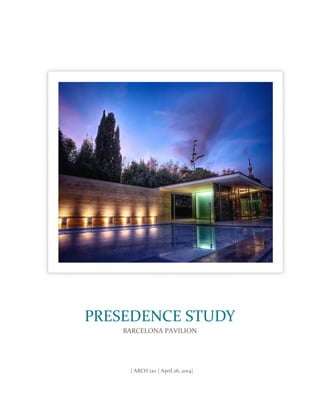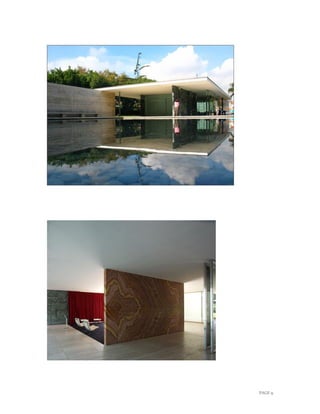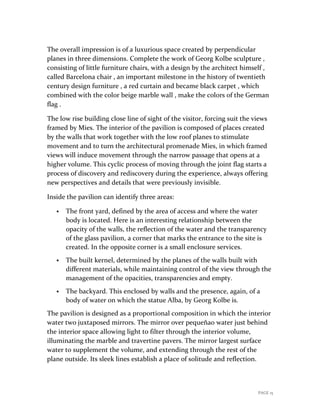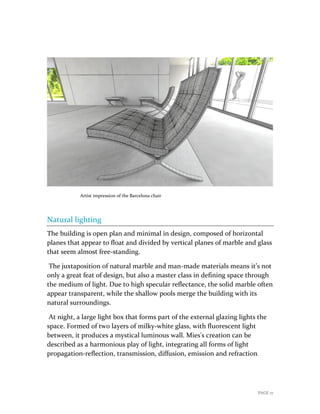The document provides details about Ludwig Mies van der Rohe's Barcelona Pavilion built for the 1929 International Exposition in Barcelona, Spain. It discusses the pavilion's design, materials, spaces, and influence on modern architecture. Key points include:
- Mies van der Rohe designed the pavilion in less than a year using steel, glass, and stone to create an open floor plan defined by orthogonal walls and a floating roof.
- Materials like travertine marble, onyx, and tinted glass were used to divide space without fully enclosing it.
- The open plan directed visitor movement through narrowing and widening spaces framed by walls and views of the surrounding landscape.
-
























